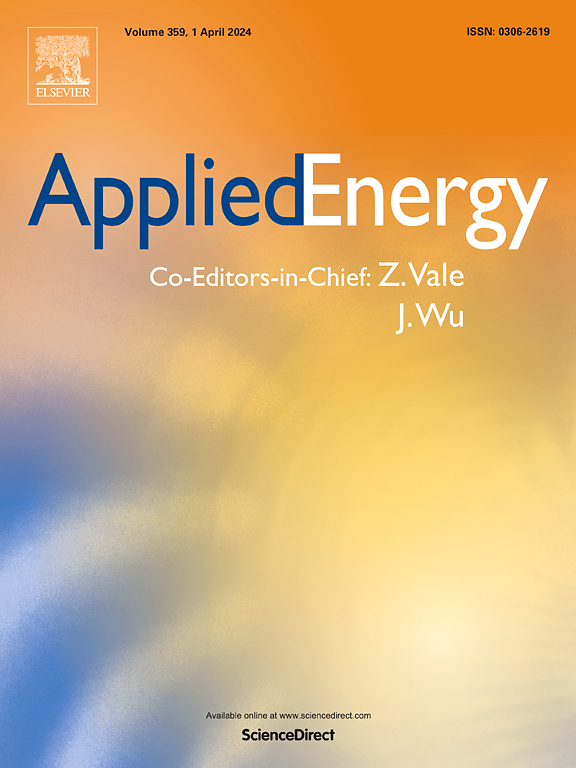基于风-气-氢能源的低碳钢铁产业多目标多阶段产能规划
IF 11
1区 工程技术
Q1 ENERGY & FUELS
引用次数: 0
摘要
钢铁工业(ISI)的脱碳转型需要其能源结构从主要消耗煤炭转向主要消耗可再生能源,包括风能和氢。这也对低碳ISI的能源经济性、效率和灵活性提出了新的挑战。为了克服这一挑战,本文提出了一种多目标、多阶段、多能量形式耦合的ISI规划(MSP)模型。提出了MSP策略,该策略考虑了炼铁过程中氢气比例(H2-CO比)的阶段可调,可以充分考虑不同阶段的能源开发,从而优化设备配置。在此基础上,建立了多目标容量规划模型,根据中国实际实施的能源政策,建立了能源经济性、效率性和灵活性目标。最后,设计了一种增强的AUGMECON-R算法(EARA)来解决模型固有的双线性约束,从而促进了高效的求解过程。仿真结果证实了MSP策略的有效性,说明了阶段可规划的H2-CO比对ISI的经济性和灵活性增强的重要价值,并证明了EARA可以在保持可接受的精度水平的同时显着提高求解效率。本文章由计算机程序翻译,如有差异,请以英文原文为准。
Multi-objective and multi-stage capacity planning for low-carbon iron and steel industry empowered by wind-gas‑hydrogen energy
The decarbonization transition of the iron and steel industry (ISI) necessitates an overshooting of its energy mix from a predominantly coal-consuming to a predominantly renewable energy-consuming one, including wind and hydrogen. This also presents novel challenges to the energy economy, efficiency, and flexibility of low-carbon ISI. To overcome this challenge, this paper proposes a multi-objective and multi-stage planning (MSP) model for ISI coupled with multi-energy forms. The MSP strategy, which considers the stage-adjustable hydrogen proportion (H2-CO ratio) used in iron production, is proposed as a means of fully considering energy development at different stages to make optimal equipment configuration. Moreover, a multi-objective capacity planning model is developed to establish energy economic, efficiency and flexibility objectives based on the actual energy policies implemented in China. Finally, an enhanced AUGMECON-R algorithm (EARA) is devised to address the bilinear constraints inherent to the model, thereby facilitating an efficient solution process. The simulation results substantiate the efficacy of the MSP strategy, illustrate the substantial value of the stage-plannable H2-CO ratio for ISI's economy and flexibility enhancement, and demonstrate that EARA can markedly enhance solution efficiency while maintaining an acceptable level of accuracy.
求助全文
通过发布文献求助,成功后即可免费获取论文全文。
去求助
来源期刊

Applied Energy
工程技术-工程:化工
CiteScore
21.20
自引率
10.70%
发文量
1830
审稿时长
41 days
期刊介绍:
Applied Energy serves as a platform for sharing innovations, research, development, and demonstrations in energy conversion, conservation, and sustainable energy systems. The journal covers topics such as optimal energy resource use, environmental pollutant mitigation, and energy process analysis. It welcomes original papers, review articles, technical notes, and letters to the editor. Authors are encouraged to submit manuscripts that bridge the gap between research, development, and implementation. The journal addresses a wide spectrum of topics, including fossil and renewable energy technologies, energy economics, and environmental impacts. Applied Energy also explores modeling and forecasting, conservation strategies, and the social and economic implications of energy policies, including climate change mitigation. It is complemented by the open-access journal Advances in Applied Energy.
 求助内容:
求助内容: 应助结果提醒方式:
应助结果提醒方式:


